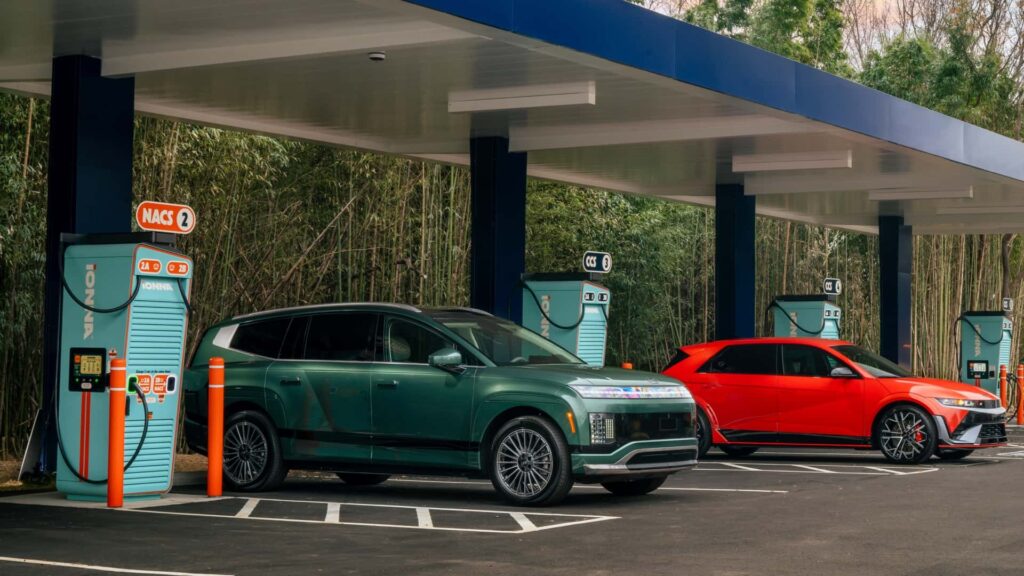The electric vehicle industry in the United States is experiencing a surge in the installation of DC fast-charging ports, according to a new study. The data from charging data analytics firm Paren indicates that the country is on track to see 3,000 more DC fast charging ports installed in 2025 compared to the previous year.
This increase in charging infrastructure comes at a time when the EV industry is facing challenges such as high prices and regulatory hurdles. However, the growth in public charging installations is a positive sign that the EV revolution is still gaining momentum.
One of the key players driving this surge in charging infrastructure is Tesla, which installed over 600 new ports in May alone. Despite facing some setbacks last year, Tesla’s Superchargers are leading the way in expanding the charging network in the US.
Paren’s chief analyst, Loren McDonald, highlighted the rapid pace at which new DC fast-charging ports and stations are being deployed in the country. He emphasized that the charging industry is moving forward with building larger, higher-power stations that offer better amenities and reliability for customers.
In addition to Tesla, other charging providers are also stepping up their game by offering more amenities and better customer experiences at their charging stations. Networks like Ionna, Mercedes-Benz High-Power Charging, Walmart, Pilot Flying J, BP Pulse, Rivian, and Buc-ee’s are among those that are enhancing their charging infrastructure to provide a more pleasant charging experience for EV owners.
With the increasing availability of charging infrastructure and improvements in reliability, the barriers to EV adoption are gradually being overcome. The expansion of the charging network, coupled with efforts by automakers to adopt standard charging protocols like Tesla’s North American Charging Standard, is expected to further accelerate the transition to electric vehicles in the US. McDonald has dubbed this current era in the electric vehicle (EV) industry as “Charging 2.0,” signifying a time of significant advancements and progress in the realm of EV charging infrastructure. This era is expected to bring about larger and more substantial leaps forward than anything we have seen in the industry thus far.
The driving force behind this surge in development is quite simple. While the growth in EV sales may not continue at an exponential rate, the technology itself is here to stay. EV owners will always need reliable places to charge their vehicles, and studies have shown that once individuals make the switch to an electric vehicle, they rarely go back to gas-powered cars. This means that the demand for charging stations will only continue to increase as more and more people transition to electric vehicles for the long term.
In addition to the growing need for public charging infrastructure, there has been a notable rise in home Level 2 Charger installations. Many automakers have recognized the importance of providing chargers to consumers when they purchase an electric vehicle, helping to alleviate range anxiety and make charging more convenient for owners.
Overall, the charging space is evolving and maturing, even as federal funding for charging infrastructure comes under scrutiny. This bodes well for individuals looking to make the switch from gasoline-powered vehicles to electric ones, as the availability and accessibility of charging stations continue to improve.
As we move further into the “Charging 2.0” era, it is clear that the landscape of EV charging is undergoing a transformation. With advancements in technology, a growing demand for charging solutions, and a shift towards sustainable transportation, the future of EV charging looks bright.
For more information on the latest developments in EV charging infrastructure, you can contact the author at patrick.george@insideevs.com.

